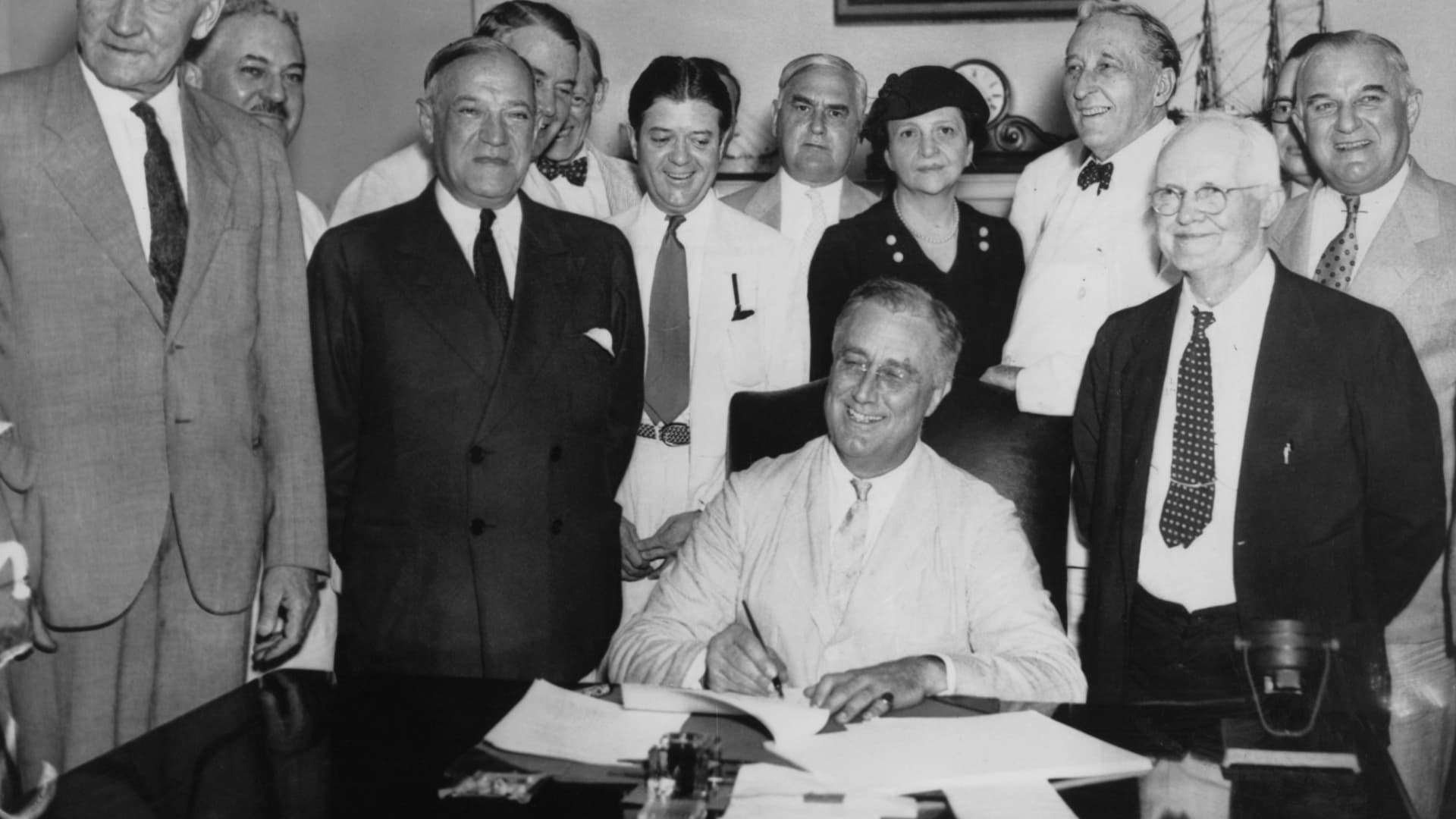Social Security has reached a milestone — its 88th birthday.
On Aug. 14, 1935, President Franklin D. Roosevelt signed the Social Security Act into law. With that law, a social insurance program to pay workers ages 65 and up into retirement was created.
“We can never insure 100% of the population against 100% of the hazards and vicissitudes of life,” Roosevelt said when the Social Security Act was signed, “but we have tried to frame a law which will give some measure of protection to the average citizen and to his family against the loss of a job and against poverty-ridden old age.”
Benefits have evolved in the years since the legislation was first signed — including the addition of disability benefits in 1956 under President Dwight Eisenhower.
Payments have also changed.
The earliest benefits, paid from 1937 to 1940, were single lump-sum payments for those who would pay into the program but not be vested long enough to receive monthly checks. The average lump sum payment was $58.06.
Monthly benefit payments began in 1940 for retired workers, as well as their wives and widows, children under 18 and surviving parents.
The first monthly retirement check was paid on Jan. 31, 1940, to retired legal secretary Ida May Fuller. The check was for $22.54.
Much has changed since the program was established more than eight decades ago. Here are three important takeaways when it comes to your benefits.
1. Social Security has never missed a payment
Since Social Security benefit payments were established, the program has never missed a payment.
“Eighty-eight years of a program that has done exactly what it set out to do, and in fact much more, in terms of covering people for disability and survivorship and never missing a payment, is a remarkable achievement,” said Dan Adcock, director of government relations and policy at the National Committee to Preserve Social Security and Medicare.
That’s even as the size of the program has grown substantially. In 1940, Social Security had 222,000 beneficiaries. In 2023, an average of 67 million Americans will receive a Social Security benefit every month.
For retired workers, the average monthly benefit is $1,837, according to the Social Security Administration, while the average for disabled workers is $1,486.
2. Future benefits may change
When Fitch recently downgraded the U.S. long-term rating to AA+ from AAA, it cited an “erosion of governance” among the reasons for the change.
“There has been only limited progress in tackling medium-term challenges related to rising Social Security and Medicare costs due to an aging population,” Fitch’s report said.
Social Security faces insolvency dates for the trust funds it currently uses to pay benefits. That includes as soon as a decade away — 2033 — for the fund used to pay retirement benefits. When combined with the disability benefit fund, the insolvency date is 2034.
If nothing is done before 2033, that will lead to a 23% across-the-board benefit cut, according to a new analysis from the Committee for a Responsible Federal Budget. For the typical dual-earning couple who retires in 2033, that would mean a $17,400 cut in annual benefits.
To fix Social Security’s funding woes, it will generally take benefit cuts, tax increases or a combination of both.
Democrats have proposed several plans to make benefits more generous, while increasing payroll taxes on high earners. Meanwhile, some Republicans have suggested forming commissions to evaluate the future of the program.
Advocates such as the National Committee to Preserve Social Security and Medicare want to see benefits expanded, rather than cut.
Social Security does not contribute to the deficit, noted Adcock.
“If we weren’t forgoing so much revenue in terms of our tax policy, then the fiscal situation we’re in wouldn’t be so concerning as it is,” Adcock said.
3. Benefits will likely still be there for you
Social Security’s funding woes have prompted fears that the program may run out of money and stop making payments — a top reason for claiming retirement benefits early, according to a recent survey by asset management company Schroders.
Yet experts say it is best to keep those fears in check when making Social Security retirement benefit claiming decisions.
“Every time we have approached a shortfall in the past, there has been some compromise to be able to continue benefits,” said Joe Elsasser, a certified financial planner and founder and president of Covisum, a Social Security claiming software company.
For lower- and middle-income retirees, a huge benefit cut “most likely isn’t in the cards,” Elsasser said.
But high-income earners may be more vulnerable to having their benefits reduced, he said. For those beneficiaries, it makes sense to stress test their plans to see whether their plan still works for them, even with possible benefit cuts.
Nevertheless, for most beneficiaries, the advantage of waiting to claim benefits, and therefore getting the biggest monthly checks available to them, still makes sense, Elsasser said.
“We should not expect cuts, we shouldn’t make our primary plans based on cuts,” Elsasser said. “But we should make a contingency plan in case cuts do materialize.”
